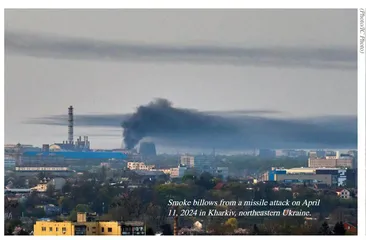Differentiation and Reorganization: the Evolution and Prospect of the Geopolitical Pattern in Eurasia
作者: Ding Xiaoxing

After the disintegration of the Soviet Union, Russia regarded Eurasia as a “close neighbor” and a “special interest zone”, highlighted Eurasian countries in its foreign policy, and integrated the region through Commonwealth of Independent States (CIS), Eurasian Economic Union (EEU) and Collective Security Treaty Organization (CSTO). But over the years, countries in Eurasia have embarked on different development paths, showing different development prospects. The Ukrainian crisis that broke out in February 2022 accelerated the geo-fission and reorganization in Eurasia, and the post-Soviet strategic landscape has become increasingly difficult to be observed as a unified region. Since the outbreak of the Ukrainian crisis, the Eurasian region has been clearly divided into three major camps. With the Ukrainian crisis persisting, the geopolitical pattern of Eurasia will be further divided and reorganized, and the trend of “de-Russianization” and diversification will continue.
Three Major Plates of Eurasian Geostrategic Pattern
In recent years, influenced by multiple factors such as the Ukrainian crisis, the geopolitical pattern of Eurasia has been divided into three plates with their distinctive characteristics, namely the European plate, the South Caucasian plate and the Central Asian plate.
I. The European Plate
The European plate mainly includes Russia, Belarus, Ukraine and Moldova. This sector is mired in the Ukrainian crisis, and the evolution of the conflict will determine the development prospects of the four countries in this region.
Russian economy has withstood more than ten rounds of Western sanctions, and its GDP grew by 3.6% in 2023. In March 2024, Putin was re-elected with nearly 87% of the votes, showing the unity and resilience of Russian society. How to end the special military operations in Russia’s favor is the priority of Putin’s new term. Putin reshuffled the government, made personnel adjustments to some key positions, and put forward development goals for 2030 and 2036. In terms of foreign relations, Russia has substantially adjusted its foreign policy, confronted “unfriendly countries” in an all-round way, strengthened cooperation with “friendly” countries, “turned east and south” in diplomacy, actively expanded international engagements and made efforts to break the isolation and blockade inflicted by the West.
Belarus and Russia are deeply intertwined. After the outbreak of the Ukrainian crisis, the relationship between Belarus and the West was completely broken. Together with Russia, Belarus was severely sanctioned by the West, and the integration of Russia and Belarus was noticeably accelerated. In February 2024, Belarusian President Lukashenko said that Belarus is now “at the epicenter of a serious military and political crisis, and some forces are trying to involve Belarus in the war”. In view of the great changes in the external environment, Belarus issued a new version of the National Security Strategy and the Military Doctrine in April 2024, highlighting the importance of the Russian-Belarusian alliance.
The conflict with Russia is nothing less than a total disaster for Ukraine, and its economy has been hit hard. 60% of its budget expenditure depends on external assistance, more than half of its energy infrastructure has been destroyed, and the task of national reconstruction is arduous. The biggest loss is in the population. When the Soviet Union disintegrated, there were more than 51 million people in Ukraine. Before the crisis, its population dropped to more than 41 million, and it is estimated that it would only be 29 million by the end of 2023. According to the World Bank’s estimation, the Ukrainian crisis has turned the clock back on the country’s development by 15 years.
After the outbreak of the Ukrainian crisis, Moldova’s “pro-West and anti-Russia” policy was strengthened, with itself joining the ranks of sanctions against Russia and withdrawing from various cooperation mechanisms of the CIS. On 20th October 2024, Moldova will hold a presidential election. With the election evolving and the Ukrainian crisis persisting, the situation in Moldova and the Transnistria region is likely to intensify.
II. South Caucasian Plate
The South Caucasian plate has undergone most significant changes since the disintegration of the Soviet Union. In September 2023, Azerbaijan launched the “war on terror”, which solved the Nagorno-Karabakh problem in one fell swoop and the regional strategic pattern has been reshuffled. After the settlement of the Nagorno-Karabakh issue, Armenia and Azerbaijan accelerated the negotiation of a peace treaty, and faced a historic opportunity to reach the treaty. After the normalization of relations between Armenia and Azerbaijan, the relationship between Armenia and Turkey, the “historical nemesis”, may be improved, and the pair has basically reached a consensus on opening their borders. While easing relations with neighboring countries, Armenia’s relations with Russia have deteriorated sharply. Armenia holds that Russia, as an ally, did not play the “role of protector”. Armenia basically suspended involvement in CSTO, and constantly strengthened cooperation with the United States and the West while engaging ever more closely with Ukraine.
The overall situation in the South Caucasus has moved from confrontation in the past to relief, but the process will be tortuous and peace will not be accomplished overnight. Recently, the relationship between Azerbaijan and Armenia has seen ups and downs. The negotiation of a peace treaty between the two has encountered some resistance, and tensions have emerged in the border areas. There is also instability in Georgia. The ruling party “Georgian Dream” made strenuous efforts to pass the Transparency of Foreign Influence bill in parliament, which triggered a large-scale domestic protest. But on the whole, these events will not affect the general trend of reconciliation in the South Caucasus.